IVIS2023 - Global Communication Report #16
December 13, 2023
Global Communication Report #16
13th International Veterinary Immunology Symposium (IVIS2023)
Reported by Shwe Yee Win (PhD student)

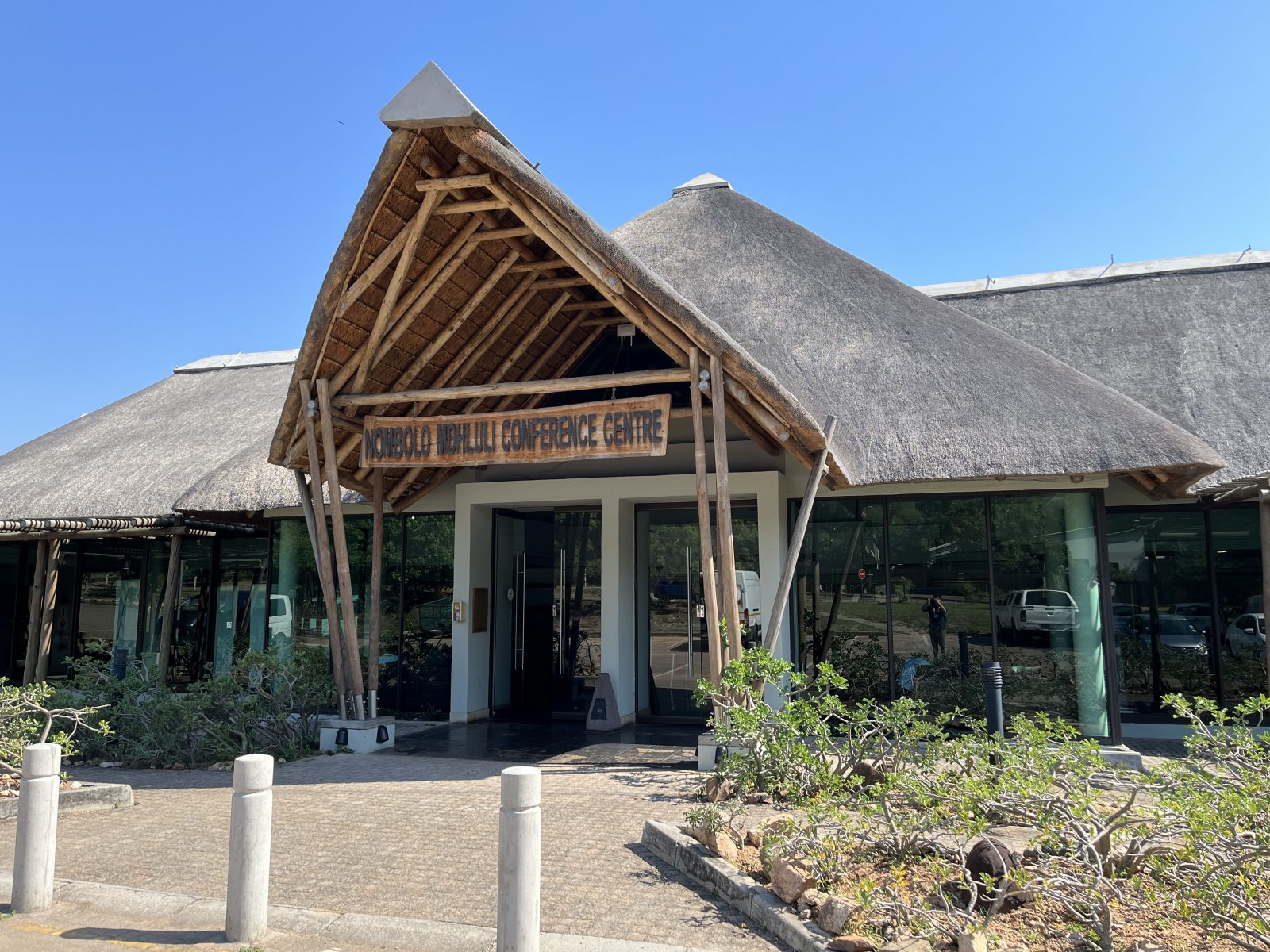
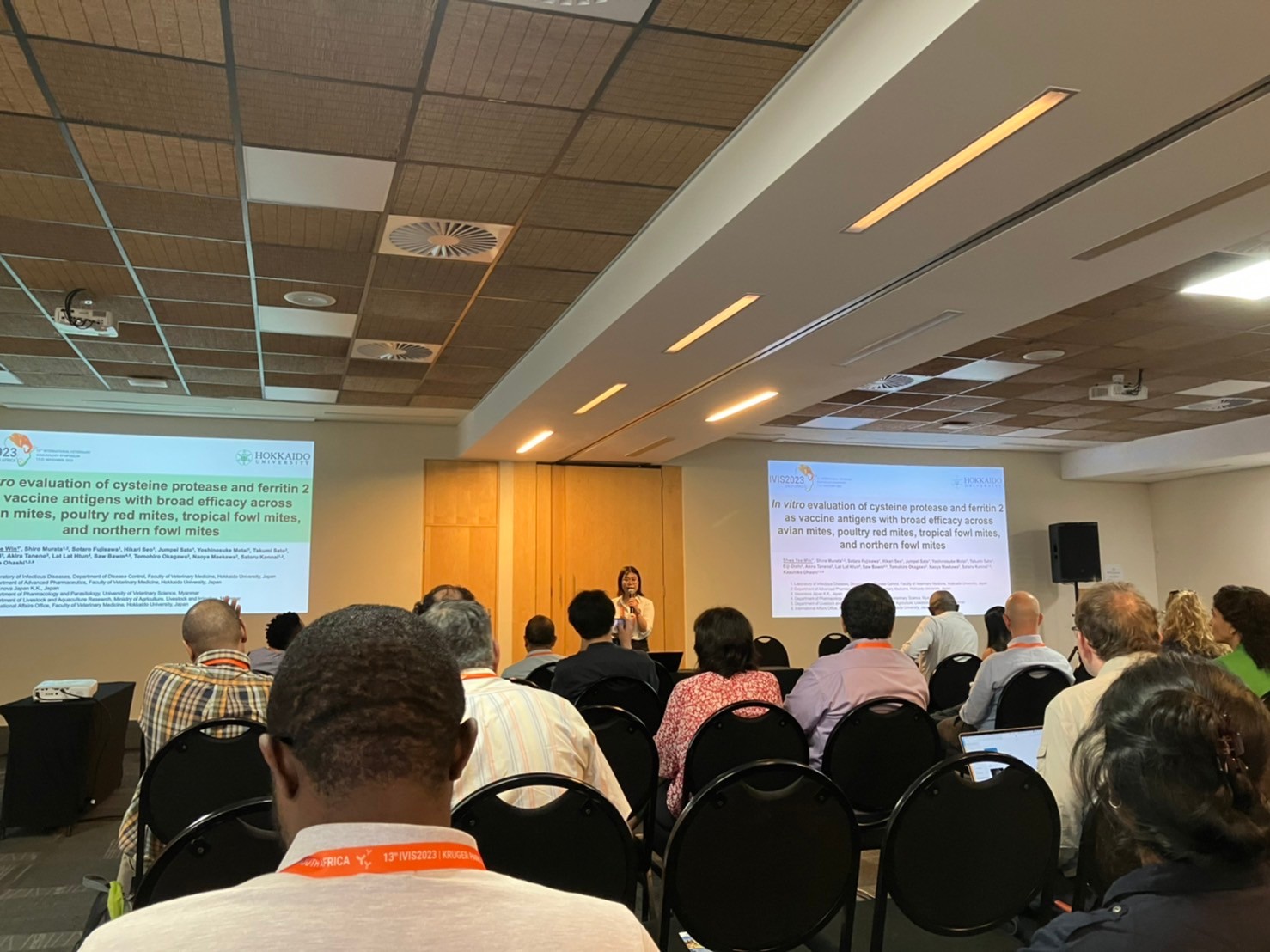
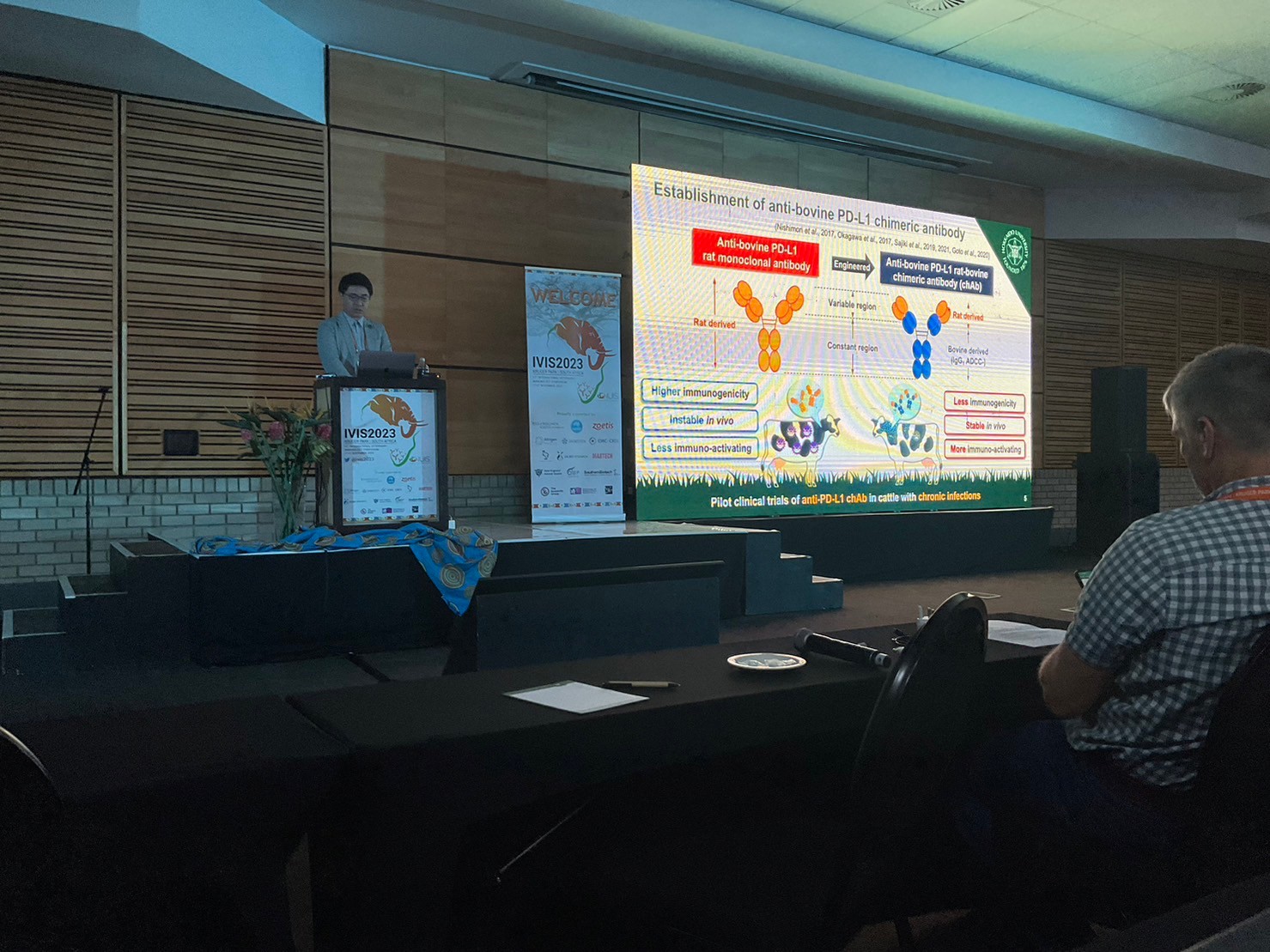
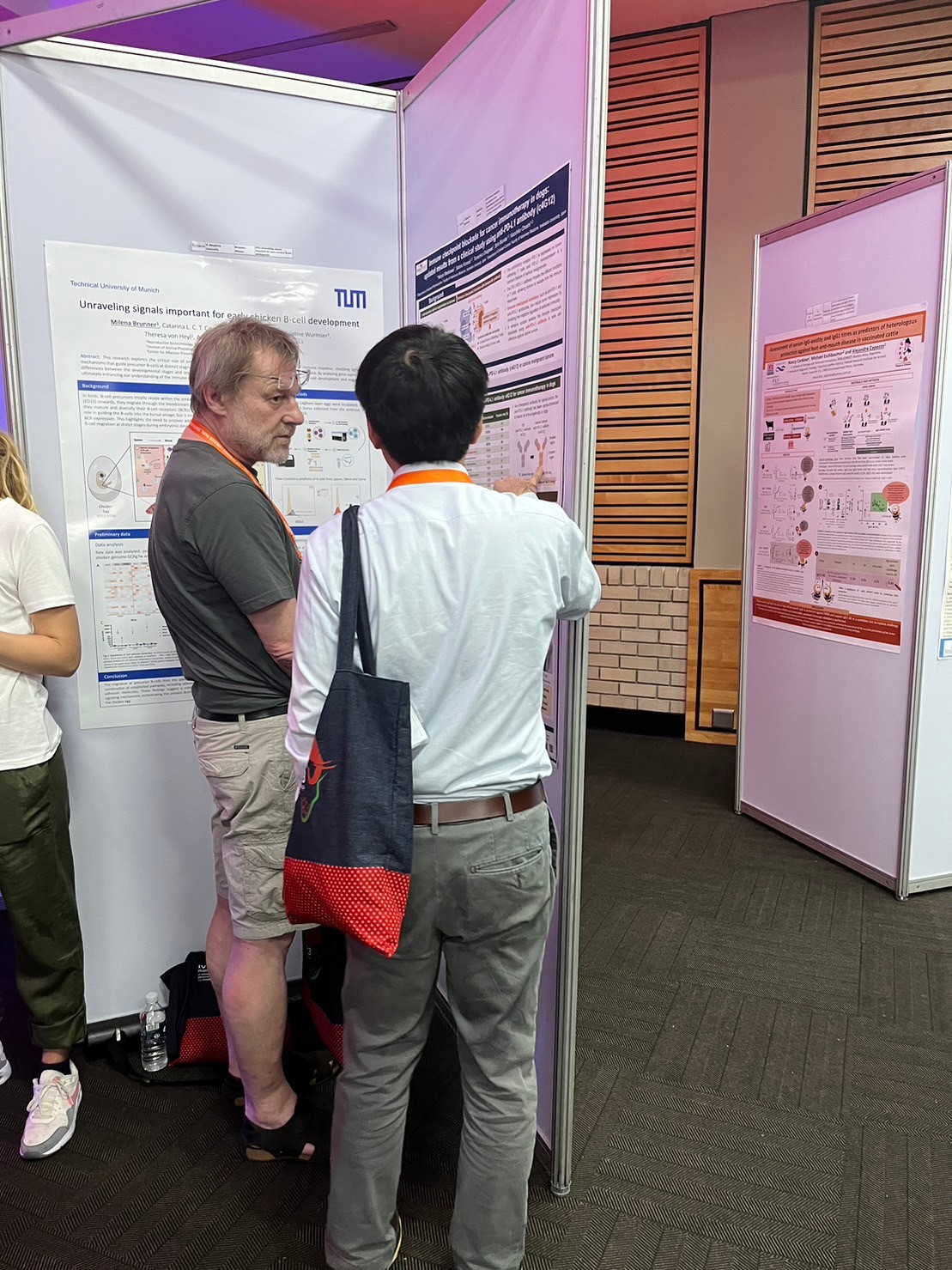
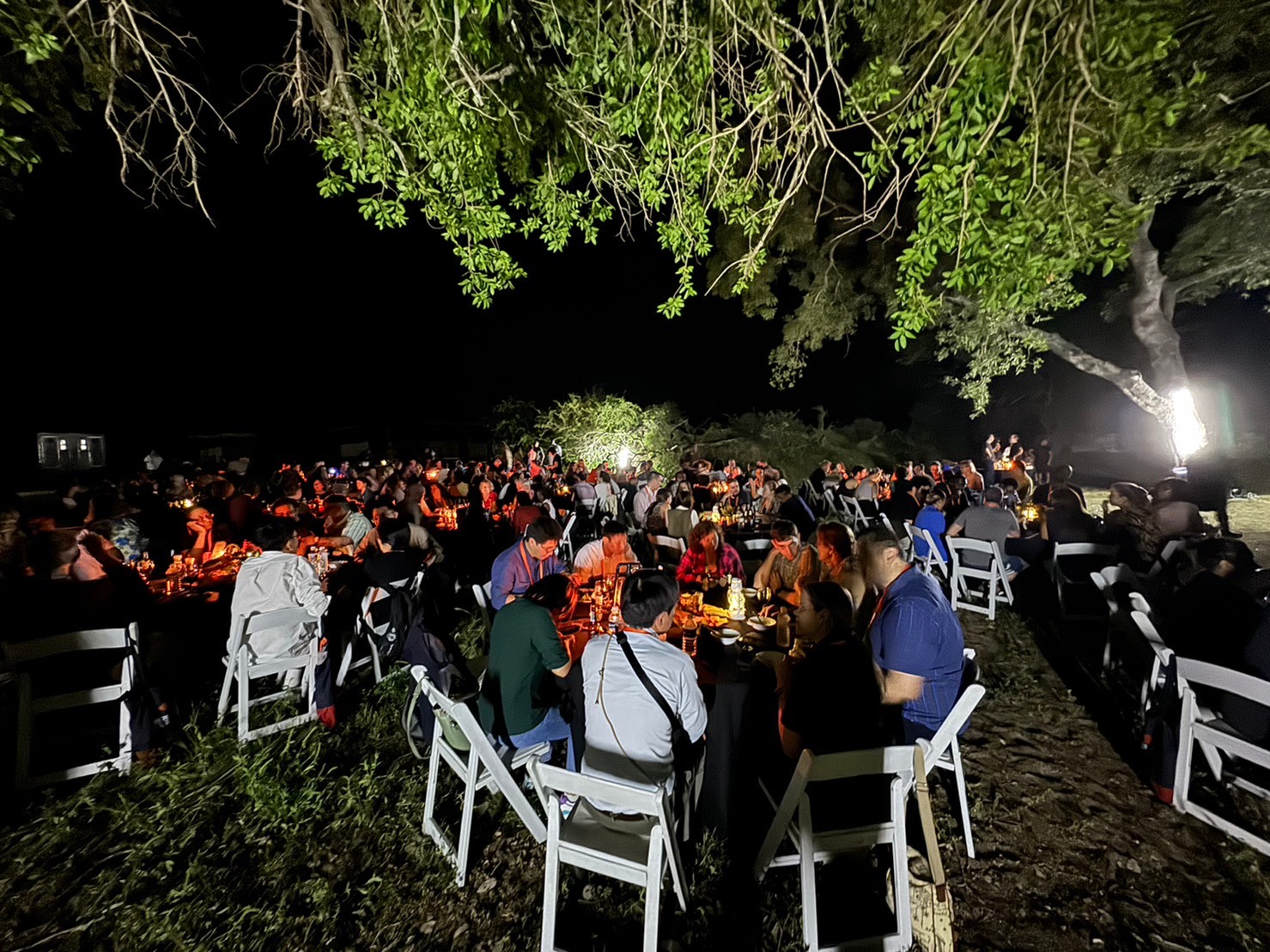
The IVIS2023 conference was held at Kruger National Park, South Africa on November 17-23, 2023. The five-day conference focused on veterinary immunology and vaccine development and included a variety of workshops, panel discussions, and oral and poster presentation sections. A total of 212 participants from 37 countries attended the conference.
IVIS2023: https://ivis2023.org/
Four members from our laboratory attended the conference and made oral and poster presentations. It was exciting to receive so many questions in our presentations and to discuss our research topics in depth with the experts.
Shwe Yee Win (PhD student)
Oral presentation in the Vaccine Development Section
“In vitro evaluation of cysteine protease and ferritin 2 as vaccine antigens with broad efficacy across avian mites,
poultry red mites, tropical fowl mites, and northern fowl mites”
Dr. Tomohiro Okagawa (specially appointed assistant professor)
Oral presentation in the Adaptive Immunity Section
“PD-L1 blockade enhances T-cell response to vaccination in calves”
Dr. Naoya Maekawa (specially appointed assistant professor)
Poster presentation in the Adaptive Immunity Section
“Immune checkpoint blockade for cancer immunotherapy in dogs:
updated results from a clinical study using anti-PD-L1 antibody (c4G12)”
Dr. Hiroto Takeuchi (alumni)
Oral presentation in the Adaptive Immunity Section
“Exploring the therapeutic potential of canine TGF-β decoy receptor for melanoma that reverses TGF-β1–mediated immunosuppression”
Throughout the symposium, we attended five workshops focusing on single-cell sequencing and spatial transcriptomics, veterinary vaccines for bacterial diseases, immunological toolkit, MHC, and supports for early carrier researchers. Other sessions were held in a parallel section. We joined various sections depending on our interests.
One of the most exciting sections I attended was the immune-informatics section. I learned how to design and perform immuno-informatic analysis for multiple epitope-based vaccines from a presentation. It was a good opportunity to learn in silico analysis for the construction of peptides which are antigenic, non-allergenic, and immunogenic determinants on the candidate antigens, in silico codon optimization and molecular cloning of constructed vaccine.
In addition, I had the opportunity to learn single-cell RNA-seq mapping of chicken leucocytes in peripheral blood. This study analyzed approximately 20,000 cells from 4 healthy chickens and identified 31 initial cell clusters. 28 clusters were identified as comprising mainly B cells, T cells, monocytes, thrombocytes, and red blood cells. Of the remaining clusters, two were identified as basophils and eosinophils, and one as proliferating cells of mixed origin. Analysis of the monocyte clusters showed one subcluster comprising heterophils, as well as subclusters of monocytes with differential expression of MHC II and a mannose receptor. This study identified both previously well-known and novel populations in chicken leukocytes, although T-cell subtypes were proved more challenging to decipher. This methodology definitively has benefits as well as limitations in chicken immunology, e.g., due to the incomplete annotation of the chicken genome.
I would like to highlight the Comparative Immunology Section as another interesting section. The presentation on transcriptional profiling of blood and liver natural killer (NK) cells revealed the presence of a novel NK cell subset in porcine liver. The porcine liver harbors two distinct NK cell subsets: a CD8αhigh subset, with a phenotype akin to conventional NK cells in blood, and a CD8αdim subset, which phenotypically closely resembles human liver-resident (lr) NK cells. This suggests that the pig might be an attractive animal model for studying lrNK cell biology. The CD8αdim lrNK cell population mainly includes genes associated with the (adaptive) immune response and exhibits an immature and anti-inflammatory phenotype. The CD8αhigh NK cell population in the liver appears to represent a population with an intermediate phenotype expressed transcripts associated with liver residency, in particular CXCR6. The transcriptional landscape of porcine liver NK cell subsets lays the foundation to study liver-resident NK cell biology.
Throughout the symposium, I met with immunologists, vaccinologists, researchers, and project administrators from different globes, which could provide opportunities for future collaborations. I also had opportunities to learn many different ideas and knowledges that can be applied for my current and future research careers. In addition, we also enjoyed a lot the South African culture and the safari of Kruger National Park. I appreciate the opportunity to participate in this conference.
Attendees from our lab

Nombolo Mdhluli Conference Centre (the conference venue)

Presentation by Ms. Win
Presentation by Dr. Okagawa
Presentation by Dr. Maekawa

Official dinner (bush dinner) under the African sky

